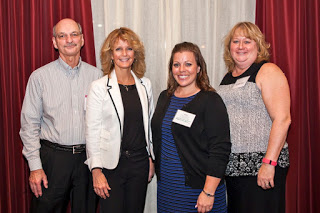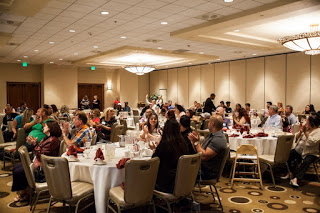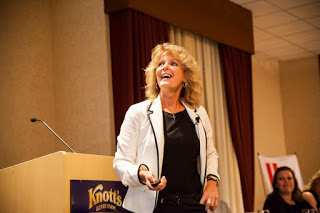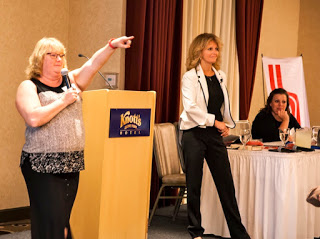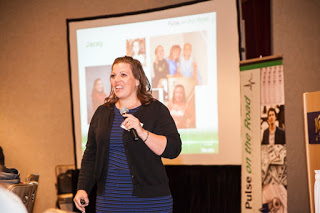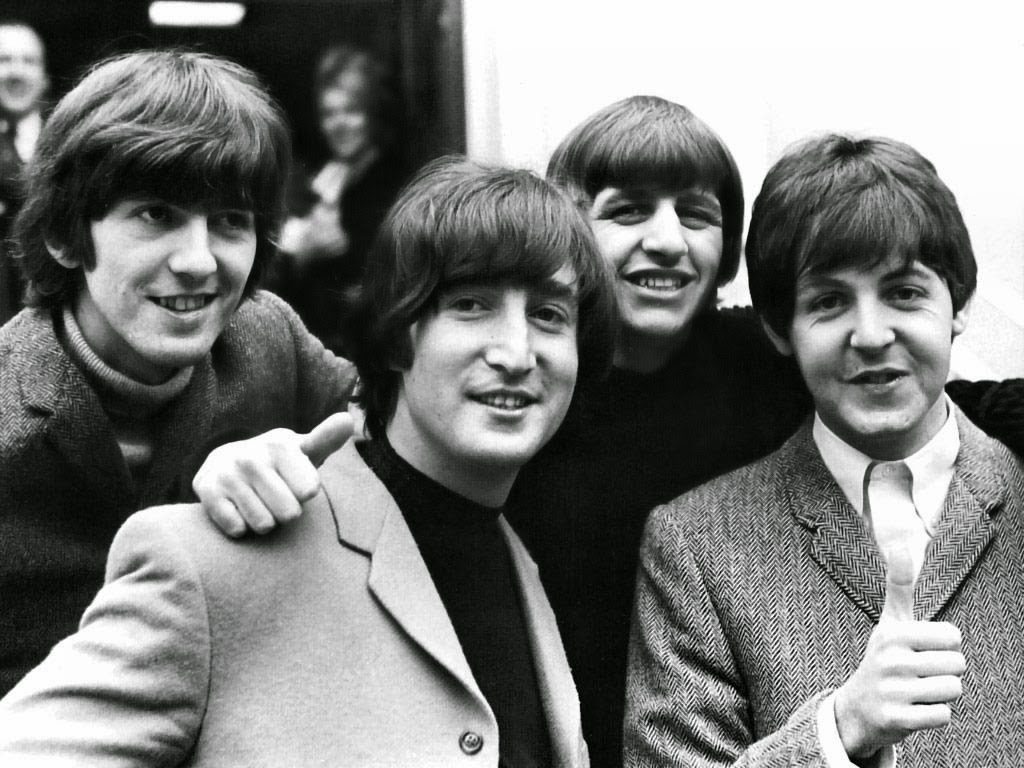Pulse on the Road in Sunny California
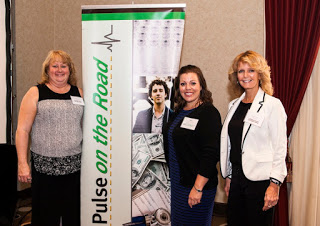 |
| Speakers Michelle Rice, Kelly Lynn Gonzalez, Laurie Kelley |
Warmer than the
California sunshine was the greeting the Pulse on the Road speakers received
when visiting Buena Park on May 13. Executive Director of the Hemophilia
Foundation of Southern California Michelle Kim opened the Friday night event by
welcoming the large audience, who had just finished a delicious meal, and
introducing me, Michelle Rice (vice president public policy and stakeholder
relations, NHF), Paul Clement (science editor, PEN), and Kelly Gonzalez, person
with von Willebrand disease and mother of a child with the same.
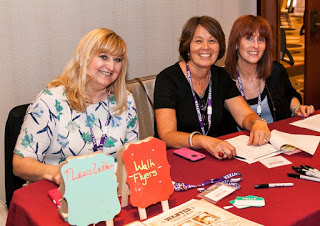 |
| Volunteers Patti Huerta, Linda Clement and Randi DeSantis |
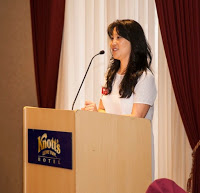 |
| Intro by Michelle Kim |
The focus this time was
on access to product choice. Michelle Rice opened the event by speaking about
the many ways payers might choose to block choice of product—and why. Skyrocketing
drug costs combined with a plethora of new biological drugs, and not just in
hemophilia, are breaking the budgets of states and insurers. To contain costs,
payers are looking for ways to streamline contracts with the various
pharmaceutical companies. Payers might attempt to restrict brands under their
formulary. This means you must read your formulary to see if your brand is
covered. They also might attempt “step therapy,” which allows you to keep your
brand, even if it is not on formulary, but only after you “fail” at the
approved brand. What does fail mean? The drop fails to stop your bleeding. This
approach seems quite risky for those with bleeding disorders.
Michelle’s and I focused on what you need to know about product choice in order
to challenge your payer to keep the drug you want. Kind of like a Hemophilia
Products 101. We started with the basics: plasma-derived versus recombinant. Safety
versus purity. First, second and third generation drugs. Prolonged half-life
products. And what’s in the pipeline… and that was at once exciting and scary!
You can see that if you are a payer, you will soon be deluged with new
products. I asked the audience to guess how many factor VIII and IX drugs there
are currently on the market. They replied, six? Ten? How about 24! And more to
come.
with Kelly Gonzalez’s riveting take of how she took control of her own health care
in the face of apathetic payers who did not understand VWD or her needs or that
of her daughter. Kelly’s story is a model for anyone looking to achieve success
in securing products and services. It’s dramatic, gut-wrenching and
inspirational!
the audience choose by applause where they’d like a donation from Pulse on the
Road to go, and the Emergency Fund won. POTR gave $1,000 to the HFSC in recognition
of its advocacy and great work for families. Michelle Kim has turned heads with
her new leadership and we look forward to more great things from this vibrant
chapter!
this chapter in 1992, where I first met Paul Clement and wife Linda, who are
now my long-term dear friends, and also colleagues. Paul, as you may know, is
an extraordinary writer and researcher for us at LA Kelley Communications. And
I saw so many others I met here long ago. It was great to see everyone.
her team for hosting us; and thanks to Baxalta for supporting this event!

